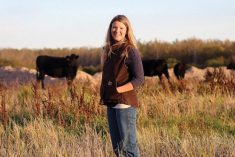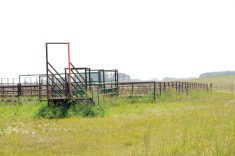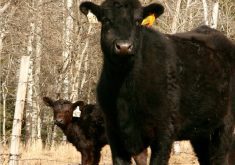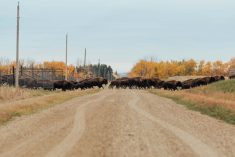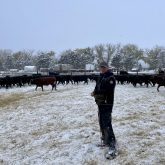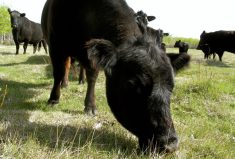After a long Alberta winter, farmers weren’t the only ones happy to see spring.
“I’ve had a lot of issues with elk and deer going through here,” said Lawrence Andruchiw, who farms near Spirit River.
“When the plants are first coming up in the spring, they pull the whole plant right out. I decided I had to stop them from eating in my pasture and hay land.”
The answer was three-dimensional fencing.
“I had one spot where they were crossing — their game trail — where I put the 3D fencing in, and boy, it really worked well. As soon as they hit that, they’d get tripped up and they’d quit going.”
Read Also

Alberta gives green light for problem elk hunting
Alberta farmers and ranchers have been calling for a solution to the problem elk issue in the province, and the Government of Alberta has now responded by giving the green light to a problem elk hunting provision for Alberta’s producers.
As part of a research project with the Peace Country Beef and Forage Association, Andruchiw installed about a quarter-mile of 3D fencing four years ago. Unlike typical fencing, which can be jumped by elk and deer, 3D fencing incorporates differing heights, widths, and depths, which can be tricky for wildlife to navigate.
“It’s a single wire three feet out and three feet high on either side of your other fence,” said Andruchiw. The three-dimensional effect prevents the wildlife from breaching the fence, mainly because of poor depth perception.
“When game jumps the fence, they hit that wire because they can’t judge where the wire is.”
Some people electrify the wires, but that’s not necessary, said Andruchiw.
“They recommend to put power on it to make it an electric fence, but I didn’t and it worked just fine.”
So far, the only setback has been with large herds of elk, which can “destroy” 3D fencing when they hit it. But for the most part, it seems to be doing the trick and Andruchiw plans on expanding it to other areas of his operation later this year.
“I’ve stopped them from going across my hay land and pasture,” he said. “I’d rather be feeding my cows than feeding the wild animals, and it does keep the game out.”



